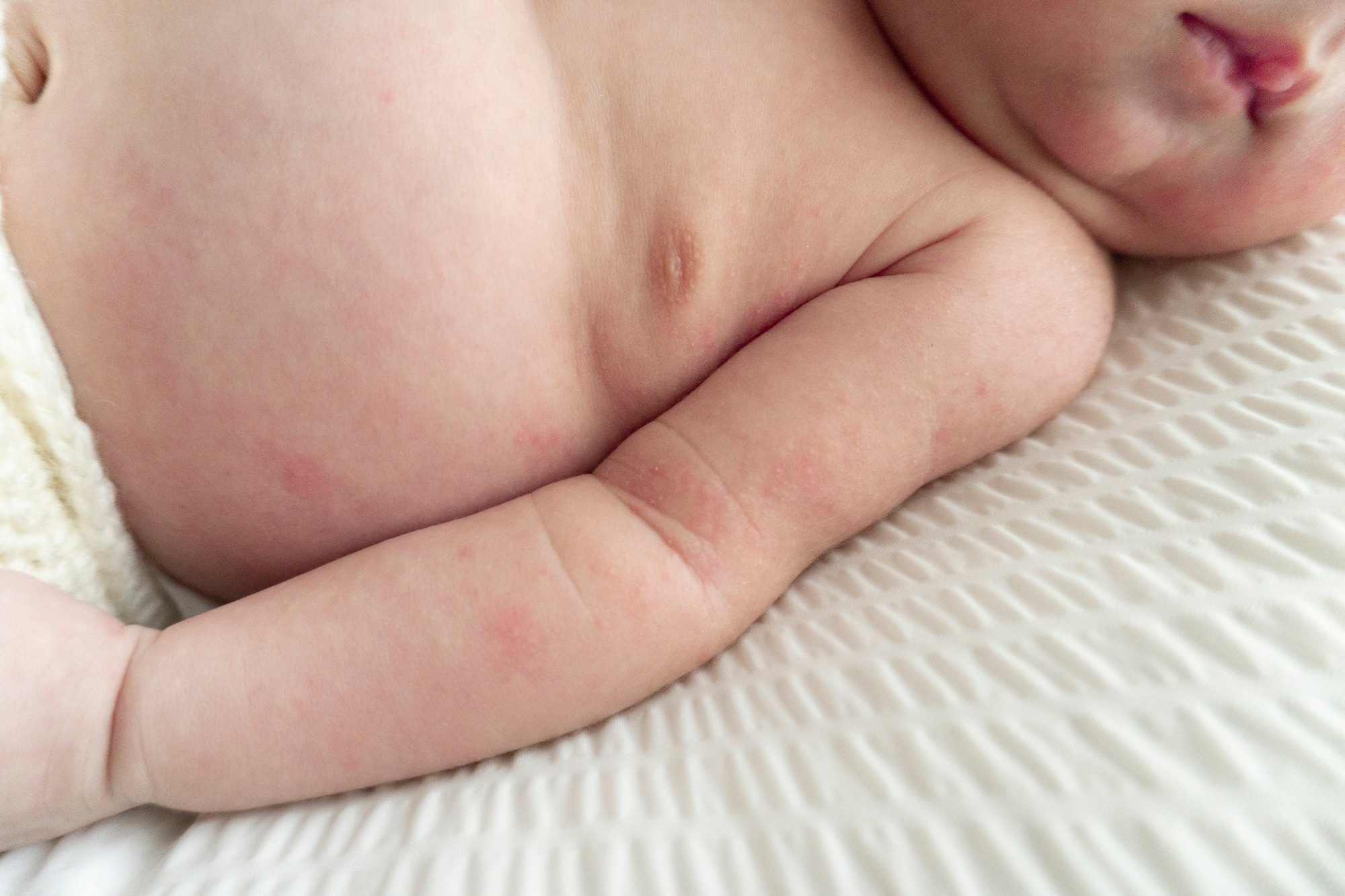New research out of Japan challenges global assumptions that children born by cesarean section are more likely to develop allergies than those delivered vaginally.
 Study: Association between cesarean delivery and childhood allergic diseases in a longitudinal population-based birth cohort from Japan. Image credit: leeeee77/Shutterstock.com
Study: Association between cesarean delivery and childhood allergic diseases in a longitudinal population-based birth cohort from Japan. Image credit: leeeee77/Shutterstock.com
A recent study published in the journal Scientific Reports in Japan failed to establish any association between cesarean delivery and the risk of childhood allergy in Japanese children.
Introduction
Allergic conditions continue to increase worldwide for unclear reasons. The simultaneous increase in cesarean section (CS) births has been cited as a possible underlying cause or contributor.
In Japan, cesarean deliveries comprised 21.6% of all deliveries in 2020, compared to 18.4% in 2008. Such infants are likely to have a less diverse gut microbiome due to the absence of contamination of the infant with maternal gut bacteria. The infant’s immune system is less adapted to respond to antigenic stimuli compared to those born vaginally.
Despite this, the incidence of atopic dermatitis or bronchial asthma has not risen since 2000. In fact, data from the Japanese version of the International Study of Asthma and Allergies in Childhood show downward trends in wheezing and eczema among children aged 6-8, unlike the increase observed in the Western population. Conversely, food allergy and allergic rhinitis have slightly increased in Japan.
The link between CS and allergic disease is suggested mainly from Western data, with limited generalizability due to the wide variability in sociocultural, economic, and genetic factors compared with Asian or African populations. While some reviews included Asian studies, methodological variability has led to conflicting results.
This highlights the need for a more uniform study design, focusing on the Asian region and minimizing confounding caused by genetic, lifestyle, and cultural factors.
Study findings
Cesarean deliveries were more likely in mothers giving birth for the first time, and babies were more likely to be smaller, preterm, or multiple. Their parents were more likely to be older, educated, and live in cities.
It is important to note that these demographics and clinical differences may reflect factors related to the likelihood of having a cesarean delivery and the risk of childhood allergic diseases, not a causal relationship.
Within the study cohort, children born by cesarean section appeared to have higher rates of asthma, allergic rhinitis, and conjunctivitis up to approximately 9 years of age. However, these differences likely reflect underlying demographic factors rather than a direct effect of cesarean delivery.
After adjusting for other sources of confounding, including sex, age, and education, as well as drinking during pregnancy, children born by cesarean section were not at higher risk for any allergic condition.
The only allergy more common among such children was food allergy at 7-8 years when the risk was 3.5 times that of vaginally born children. However, the sample size was extremely small, with 10 and 7 children born by cesarean and vaginal birth, respectively. The result was not statistically significant at any of the other 32 assessment points.
This casts doubt on the reliability of this finding, suggesting random variation rather than a true association. The study was comprehensive and followed up babies longitudinally for multiple allergic conditions, strengthening its conclusions.
These findings contradict those of prior researchers, suggesting an increased risk of asthma, allergic conjunctivitis or rhinitis, eczema, and food allergies. The relatively smaller sample size may account for this difference. Another factor could be the relatively strong indication for cesarean section in Japan compared to Western countries, suggesting that the infants in each cohort could already have a different risk profile for allergic conditions.
Sociocultural, genetic, and immunologic factors may also affect the child’s predisposition to allergies. “In Japan, it is possible that the delivery method does not have a strong direct impact on the development of allergies.”
However, this study has several limiting factors. The study relied on parental diagnosis of allergic diseases in the children without confirmatory clinical testing or medical records. These could lead to misclassification or reporting bias, particularly in food allergy and asthma in young children.
The researchers were also unable to account for some important confounding factors, such as whether the parents had allergic disease, which may influence the likelihood of cesarean delivery and the child's risk of allergies.
Conclusion
This study did not show that cesarean delivery was associated with a higher risk of childhood allergy, contradicting earlier systematic reviews.
Future studies should be larger, lending strength to the observed associations or lack thereof.
Download your PDF copy now!
Journal reference:
- Tamai, K., Matsumoto, N., Mitsui, T., et al. (2025). Association between cesarean delivery and childhood allergic diseases in a longitudinal population-based birth cohort from Japan. Scientific Reports. Doi: DOI: 10.1038/s41598-025-03703 https://www.nature.com/articles/s41598-025-03703-3